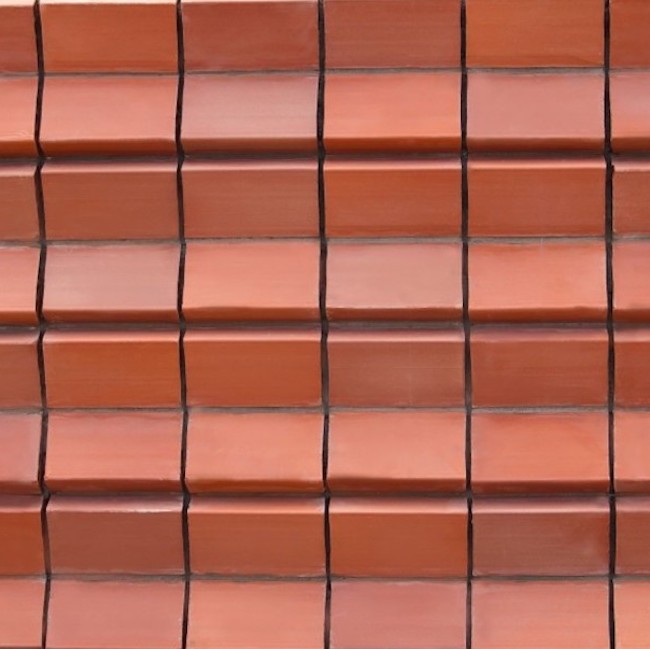A new kind of terracotta tile sits at an angle and uses vents to disperse heat from the sun, which would otherwise reach the building. The designers, Miguel Niño and Johanna Navarro of Sumart Diseño y Arquitectura SAS in Columbia, told ArchDaily that the design would help people save on things such as air conditioning. They call the project Bloque Termodisipador BT.
The architects said that there is a worldwide rise in the need for housing and their brick attempts to address one facet of that problem by making homes that are both cost-effective for their owners and are sustainable en masse. They came up with one of those innovations that seems so obvious one wonders why it wasn’t in use for years. They state:
BT – Bloque Termodisipador is a ceramic brick for the construction of architectural enclosures and facades, which adopts the same manufacturing process of the traditional fired clay brick, with an innovation in the design of the cross section used in the extrusion process. Its unusual shape, made up of a rectangle and an irregular scalene triangle, partially protects the brick from solar radiation and the transfer of heat.

The terracotta bricks are set at a variety of angles to give builders design options, but they are all angled away from direct sunlight. The front-facing side of the bricks are scalene triangles, which have angles of about 114 degrees, the architects state. This is the opposite of solar rays (24 degrees) during maximum sun exposure. This means that the tiles will never take the full force of the sun.
That couples with the venting. Air is a very poor conductor of heat. The empty cells inside each brick go down three layers thick, giving heat little opportunity to transfer. In addition to heat, the designers told Inhabitat that the bricks have an added bonus of dispersing sound.
What do you think of this innovation in contemporary ceramics? Let us know in the comments.

Photographs by Camilo Suz. Renderings and photographs courtesy of the designers. Click to see a larger image.



Add your valued opinion to this post.